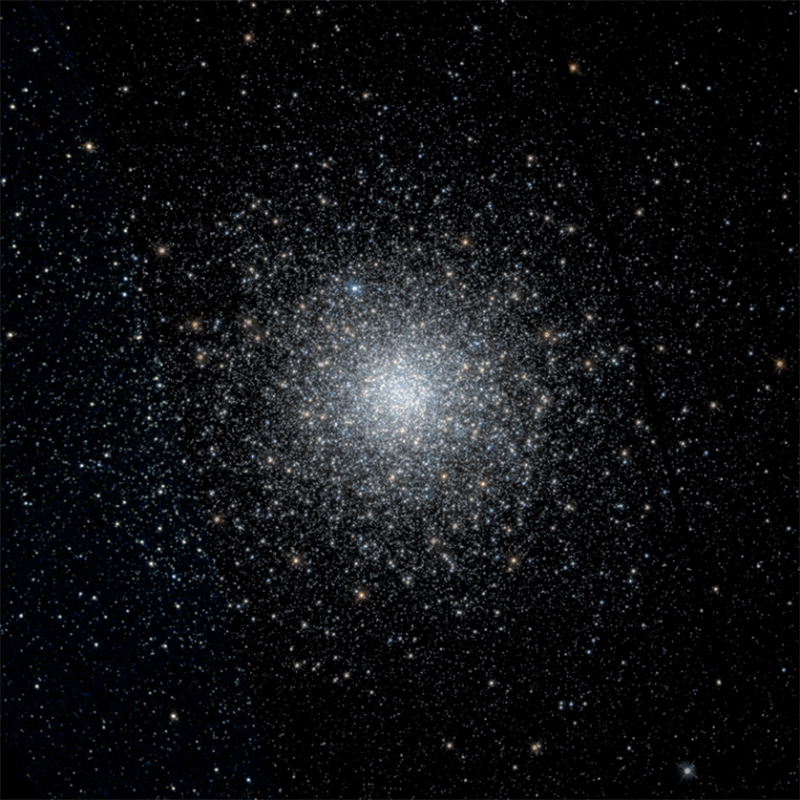M75

Credits: The globular cluster Messier 75 Based on observations made with the NASA/ESA Hubble Space Telescope, and obtained from the Hubble Legacy Archive, which is a collaboration between the Space Telescope Science Institute (STScI/NASA), the Space Telescope European Coordinating Facility (ST-ECF/ESA) and the Canadian Astronomy Data Centre (CADC/NRC/CSA)
Messier 75 (M75) is a globular cluster located in the southern constellation Sagittarius.
The cluster has an apparent magnitude of 9.18 and lies at a distance of 67,500 light years from Earth. It has the designation NGC 6864 in the New General Catalogue.
The distance of M75 makes it challenging to resolve the cluster with small telescopes. One needs a 10-inch or larger telescope to see the cluster’s stars.
In binoculars, the cluster can barely be distinguished from the neighbouring stars, while 4-inch telescopes reveal a hazy patch of light.
Facts about M75 by Keith Turnecliff
Messier 75 has an absolute magnitude of -8.5 and is about 180,000 times more luminous than the Sun. It is home to about 400,000 stars and believed to be about 13 billion years old.
Messier 75 was discovered by Charles Messier’s friend and colleague Pierre Méchain on the night of August 27 to 28, 1780.
Messier observed the cluster in October, determined its position and added it to his catalogue as object number 75 on October 18 of that year.
The best time to observe M75 is during the months of August and September.

Best viewed with resolution 1920 x 1080.
Credits: Image courtesy of Starry Night Pro Plus 8, researched and implemented by Keith Turnecliff.